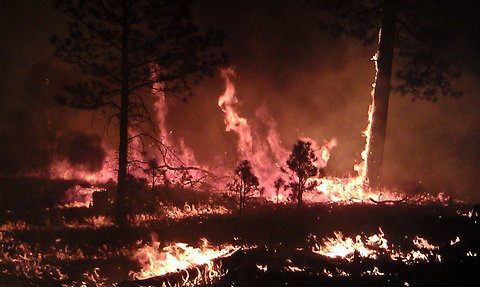By SUSAN MONTOYA BRYAN, Associated Press

From the air, the smoke stretches as far as the eye can see. On the ground, firefighters talk about the steep canyons that keep them from directly attacking what has become the largest wildfire in New Mexico’s recorded history and the largest currently burning in the country.
Sure, things might look bad. But to land managers and scientists, the record-setting blaze represents a true test of decades of work aimed at returning fire to its natural role on the landscape — a test that comes as many Western states grapple with overgrown forests, worsening drought and a growing prospect for more megafires…
Starting in the early 1970s, the Gila has been leading the way when it comes to implementing such an active fire management strategy. Instead of immediately dousing flames in the wilderness, forest managers have let them burn as long as conditions are favorable.
The question that the Whitewater-Baldy fire is expected to answer is whether that strategy will pay off with more natural, less intense fires.
“There’s a great opportunity here to study a fire like this,” said Matthew Rollins, the wildland fire science coordinator with the U.S. Geological Survey’s National Center in Virginia.
“The opportunity exists to look at how this fire has behaved differently in terms of vegetation mortality, effects on wildlife and fish habitat and water quality,” Rollins said. “We can study how it burned in the wilderness relative to areas with other types of fire management strategies and other types of ignition patterns…”
The U.S. Fish and Wildlife Service is also monitoring two packs of endangered Mexican gray wolves that are situated to the north and east of the fire. Last year, wolves in Arizona were able to escape the massive Wallow fire with their pups, but it’s unclear how mobile the packs in New Mexico are since their pups are much younger.
The fire is about 15 percent contained, which much of that being on the fire’s northern and northwestern flanks.